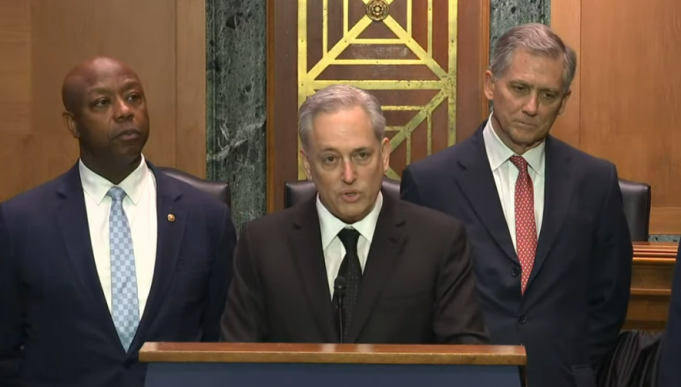
Voyager Inches Toward Recovery as Bankruptcy Proceedings Continue
Aug 2, 2022, 2:06PM by Mike Dalton
by Mike Dalton
Voyager Digital is trying to make a recovery as its bankruptcy proceedings continue. Will investors get their money back?
Voyager Digital, one of several crypto lending firms that became insolvent last month, is now in the process of carrying out its recovery plan.
Voyager suspended most activity on July 1, including trading, deposits, withdrawals, and loyalty rewards. It then filed for a reorganization under Chapter 11 of the U.S. Bankruptcy Code on July 5. The resulting hearings began on July 8.
Voyager Discusses Recovery Plan
Voyager has provided updates on its reorganization plan in recent blog posts. In a July 11 update, it said that its recovery will involve distributing assets to users.
Voyager did not promise to provide users with their entire balance. However, it did say that pro rata shares of various assets will be likely distributed to users. Those assets include cryptocurrency, proceeds from its Three Arrows Capital recovery, existing Voyager tokens, and common shares in the reorganized company.
Voyager Digital added that it holds customer funds in a For Benefit of Customers (FBO) account at the Metropolitan Commercial Bank.
In an update on July 22, Voyager said that it is seeking court approval to allow its customers to withdraw cash from these FBO accounts. It says that it will learn the timing of withdrawals after its next hearing on August 4.
Voyager's case is far from over. The company's recovery plans could change depending on how users vote on its plans and depending on future hearings.
Voyager Rejects FTX’s Offer
Another cryptocurrency company has offered to come to Voyager’s rescue. On July 22, FTX, in cooperation with its sister company Alameda Research, proposed a deal that would see it acquire Voyager’s debt for $250 million.
That offer would allow Voyager users to open an FTX account funded by an early portion of their bankruptcy claims. Users would then be able to withdraw their funds or trade on FTX with temporarily waived fees.
FTX’s proposal aimed to complement Voyager’s plans and serve as a voluntary option for users—not a mandatory replacement for those plans.
Voyager responded poorly to the proposal. The company's lawyers called the proposal a “low-ball bid dressed up as a white knight rescue” and argued that the offer was meant to generate publicity for FTX itself rather than come to the aid of Voyager. Lawyers also called the offer a subversion of the bankruptcy process.
Voyager previously received a $500 million loan from Alameda Research earlier this summer. That loan was meant to replace a loan that Three Arrows Capital defaulted on, which involved a comparable amount of money.
Former Exec Offers Competing Recovery Plan
Elsewhere, Voyager’s former Chief Innovation Officer Shingo Lavine, has submitted an objection to the company's current plans. His objection also suggests an alternative course of action that could help Voyager recover.
The plan, detailed in a July 28 filing, would see a team led by Shingo Lavine and his father, Adam Lavine, replace Voyager’s current management.
The Lavine proposal would have Voyager cease all lending activities. It would also see Voyager reboot its trading platform, introduce a new live trading feature, issue a “recovery token,” and make various other changes to its services.
The two parties appear to have a reasonably close relationship. Voyager acquired one of Lavine’s companies, Ethos, in 2019. Though Lavine left his executive role at Voyager in 2021, he still owns equity in the company.
However, Voyager has not publicly responded to Lavine's proposal, and it seems unlikely that it will respond positively given its negative reaction to FTX’s offer.
Regulators Are Concerned Over Insurance
Recent regulatory developments suggest that insurance will not cover user losses. On July 28, the U.S. Federal Reserve and the Federal Deposit Insurance Corp (FDIC) said that Voyager made false and misleading claims about investor insurance.
Voyager allegedly suggested at times that its user accounts are covered by FDIC insurance, which would cover user losses if Voyager fails.
In actual fact, Voyager's only FDIC-insured funds are those it holds at the Metropolitan Commercial Bank. Though this provides insurance coverage up to $250,000, it applies only if the Metropolitan Commercial Bank fails (not if Voyager fails).
Voyager clarified the matter earlier: in its July 11 post, it said that it had changed the wording on its website to reflect those facts.
Though Voyager has addressed the issue, the fact that regulators issued a cease and desist order after that date suggests the matter is not fully resolved. Regulators also published a broader advisory warning against similar errors.
Crypto Lenders Face a Liquidity Crisis
Voyager Digital is not the only company facing a liquidity crisis. Several other crypto companies—especially lending companies—are suffering from insolvency.
Celsius is another company that has frozen withdrawals, declared bankruptcy, and is now in the process of restructuring. CoinFLEX has also suspended withdrawals and is now attempting to restructure, though it has not declared bankruptcy.
Vauld and Zipmex, both of which have suspended withdrawals, have also filed for protection in recent days. Although the two companies have not yet declared bankruptcy, those filings suggest that both companies are at risk.
Since mid-June, the price of Bitcoin has remained close to $20,000, a low that was last seen in December 2020. These poor market conditions mean that crypto lending companies will likely continue to struggle with their investments.
Disclaimer: information contained herein is provided without considering your personal circumstances, therefore should not be construed as financial advice, investment recommendation or an offer of, or solicitation for, any transactions in cryptocurrencies.

















